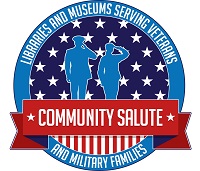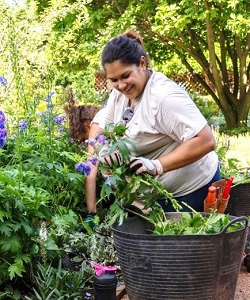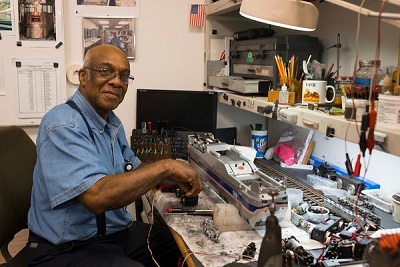Blog Posts | November 9, 2016
Share This Editor’s Note: In September, IMLS announced a cooperative agreement with FSG to strengthen the ability of libraries and museums to fulfill the unique and critical needs of veterans and military families. Through the Community Salute program, IMLS will gather information from a variety of key stakeholders in the library, museum, and military communities; identify opportunities for enhancing community services; and develop frameworks, tools, and resources to strengthen the role libraries and museums have in addressing the specific needs of veterans and military families. This is the latest in a series of Community Salute blogs highlighting the role that many libraries and museums already play in the lives of veterans and military families.
Editor’s Note: In September, IMLS announced a cooperative agreement with FSG to strengthen the ability of libraries and museums to fulfill the unique and critical needs of veterans and military families. Through the Community Salute program, IMLS will gather information from a variety of key stakeholders in the library, museum, and military communities; identify opportunities for enhancing community services; and develop frameworks, tools, and resources to strengthen the role libraries and museums have in addressing the specific needs of veterans and military families. This is the latest in a series of Community Salute blogs highlighting the role that many libraries and museums already play in the lives of veterans and military families.
By Barbara Kreski
Chicago Botanic Garden

A botanic garden is many things to many people. It is a museum of living plants and it is also an amiable host to people at transition points in their life. Immersion in the natural world tends to reduce stress and restore energy. It is no wonder that participants in the Chicago Botanic Garden’s Veterans’ Internship Program (VIP) enjoyed their summer here and made great progress towards their next step in returning to civilian employment.
The VIP program was made possible through a grant from IMLS. The grant covers two summer programs, which is fortunate because we learned so much in year one that we can apply to year two. Next year we will know:
-
Veterans can be difficult to find. Once they have separated from the military, many vets are reabsorbed into their neighborhood and are not part of any organization related to their veteran status. Finding them is dependent on spreading news of your opportunity far and wide. Partnering with others seeking to serve vets (schools, veteran centers and/or non-profits) is key. By working together, we can be sure the veterans’ needs are met, if not in our program, in another.
-

VIP participant Anna, shown here, thought she might like to pursue a teaching degree. However, through the VIP experience, she has refocused and is now aiming towards working for the International Organization for Standardization, Climate Change division. Timing matters. A newly separated vet is logically eager to move on to his or her next phase of life. It is not uncommon for a person to use up their education credits in the process of figuring out their direction. We learned that we have just one slice of time to offer an opportunity to pause, engage in a paid internship, have a cohort and a trained leader to help sort out needs and interests, and to formulate a plan. Finding vets at this critical juncture narrows our pool even further.
-
Our participants were fantastic employees and our regular staff is more eager than ever to welcome an intern as part of their team. People are, of course, individuals, but it is a given that a veteran is accustomed to working hard until the job is completed well. They have been trained to work effectively as part of a team. Veterans seem eager to devote their time and skill to a mission with meaning. This trait makes them a natural fit with a museum or other organization that has a purpose.
All of our participants were a pleasure to have here at the Garden. We can’t wait to see who participates next year!


All photos courtesy of Chicago Botanic Garden.
About the Author
Barbara Kreski is director of horticultural therapy services at the Chicago Botanic Garden.
